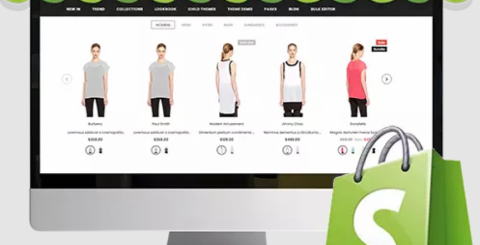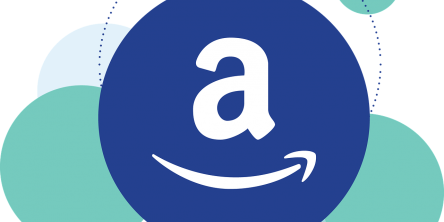Shopify Application Development: Types, Cost and Process to Develop

Whether launching or expanding your online business, now is the ideal time to launch or grow your business. In a short period, you can achieve your goals using Shopify application development.
To thrive in their industries, startups, and entrepreneurs use Shopify as a platform for eCommerce—Shopify powers over 800,000 online stores across the globe.
With the launch of Shopify's API platform in 2009, creators had access to various tools and capabilities to create and sell retail applications on the Shopify app development platform.
Using Shopify mobile application solutions, eCommerce merchants have generated over $100 million in revenue from their online business. As of 2022, the Shopify App Store will have over 6,000 different Shopify applications.
Here's a guide to help you formulate eCommerce solutions if you're new to the Shopify ecosystem and wanna make your own.
What is the Shopify App Store?
Several apps can be found in Shopify as plugins that improve the store's functionality and enhance the customer experience. The Shopify app store has thousands of apps available for you to choose from. The Shopify app can be assigned as a shortcut to integrate with the dealer's online market, and the website will be ready to go instantly.
A Shopify app is an app that lets users manage their stock, manage their marketing, consumer experience, shipping, and delivery, deliver better feedback, and meet their requirements.
What are the types of Apps provided by Shopify?
Shopify provides access to three types of apps:
Public Apps: These apps are made available to all merchants and are available in Shopify's App Store
Custom Apps: A custom-made solution for merchants with special requirements. There is no listing of these apps on the Apple App Store because they are custom-built for each individual.
Private Apps: A private app is developed rather than a custom app to meet the customer's specific needs, and Shopify does not list them.
Process of Shopify App Development
Ensure your app integrates seamlessly with your online shop, improving the user interface and user experience. You will have a higher retention rate if you build your brand with great designs and customers are satisfied with their experience. Here we outline the approach to Shopify app development:
Resources and tools
Shopify is not particular about what language you choose to develop your app, so you can use whatever programming language and framework you are familiar with to build your app. There are several tools, documentation resources, and tutorials available on the internet to help you create your first app.
Building a foundation: essentials
- Accounts for Shopify partners, Ngrok, and development stores
- Text editor and command line access on the computer.
- Worked with Node.JS, Java, PHP, Ruby on Rails, and Python backend programming languages.
- Introduce the software using the npm package manager
Polaris
The Polaris design system has been developed as an open-source solution for Shopify admins. Shopify’s Polaris platform is available for internal use within the company and can also be used by third-party developers and designers externally.
As Polaris comes with a whole host of pre-built UI elements, developers no longer need to build their custom UI elements from scratch, as they are all flexible, pre-built, and easy to use.
As far as the elements are concerned, they are composed of typography, illustrations, icons, spacing, colors, and interaction states.
Steps for Shopify App Development
You can develop your Spotify app by following these steps:
- Integrate your app with Shopify
- Polaris lets you create user interfaces
- GraphQL Admin API can be accessed and configured through the REST API
- Set up a billing API connection. One of the essential steps in Shopify app development.
- EventBridge or Webhooks are great for capturing and responding to events.
Submissions & Reviews
You can submit your Shopify app for approval after it has been reviewed and confirmed production-ready. Upon submitting your application to Shopify, a review committee will check that it meets its standards. In the review process, your app's authentication, billing APIs, and core functionality will be reviewed by the review committee.
It takes approximately 6 - 8 business days for the review team to assess your application. You will be kept informed about the progress of your app throughout the process so that you are always aware of what stage your application is in.
Notable features of the Shopify App
The Shopify app development platform offers a wide range of features that make it a crucial asset for businesses. Here are the most noteworthy:
Customer support is available 24/7
With Shopify, you can reach customer service via phone, email, or webchat 24 hours a day, 7 days a week. There is a delay in their reply time, implying that your industry has never been able to stand independently.
Themes responsive to mobile devices
These are all Shopify mobile responsive products, which is essential nowadays. An integrated mobile commerce shopping cart is included as part of the platform.
Reliable and secure
It is no secret that e-commerce marts trade with vast amounts of data and precious consumer information like credit card numbers and private details. Those who own Shopify stocks are loyal and always ensure that the site is quick, secure, and accessible. App development for Shopify is becoming increasingly popular with time.
Cost to develop a Shopify app
The cost of developing your app is estimated based on the complexity and features you wish to incorporate into it in terms of functionality. It is estimated that the cost to build a Shopify app will vary depending on the following factors:
The technical case
There are many factors to consider here, including the number of features and platforms, mobile devices and screens' support, browser support, and the time developers spend on the development process. The complexity of your Shopify app also plays a vital role in the process. To better understand this, assume you are searching for a unique algorithm for advanced filtering options. This gives you a smooth operation, but it may increase the cost of developing a Shopify app even though it provides a smooth operation.
Backend Development
To increase your app's audience, you must consider a reasonable budget. How come? To cope with the maximum load, it is necessary to have dependable technology and backup systems. Hence, you need an app that will handle and manage the complications with ease.
Conclusion
App development for Shopify isn't a new skill you'll need to master, but it does have some challenges. Shopify provides excellent functionality and a high level of uptime guarantee. Shopify's versatility can be enhanced by using the app integrations available in the marketplace. Shopify development company can assist you in creating a premium Shopify app.
Similar Articles
The rapid growth in the eCommerce sector has been reshaping the way businesses work and relate to their customers. Under this, companies are experiencing vast pressure to craft incredible customer experiences with an efficient scale as global sales of eCommerce will reach $8 trillion by 2027.
Starting a business is now very popular because we live in a world that is full of modern technologies and business models, opening unlimited possibilities and significantly increasing profit.
Merchants' key retail objective is to claim the Buy Box on a popular marketplace. This sought-after spot, featured prominently on product pages, frequently boosts sales. Attaining the buy box position requires navigating pricing tactics, seller evaluations, and delivery approaches
In e-commerce management, Shoplazza stands out for its user-friendly interface.
To run a successful marketing campaign you want to assess your prospects interests based on their engagement level. You want to know who the hottest leads are. It’s those leads who you want to email with your offers
Discover how an online store can expand your local business globally by reaching new markets, increasing sales, and leveraging e-commerce strategies effectively.
In today's fast-paced digital landscape, succeeding in ecommerce requires more than just having a great product and a functional website. With millions of online stores vying for attention, standing out from the crowd demands strategic planning and execution.
At this point, e-commerce is practically omnipresent. Think about it — e-commerce is present in various sectors already, helping people and businesses buy a wide variety of products and services through some clicks of a mouse. But what keeps such e-commerce businesses running in the face of such intense requirements?
For businesses to thrive in the dynamic world of e-commerce, staying ahead of the competition is essential. And therefore, delivery of exceptional customer experiences has become paramount for everyone – from small startups to established enterprises









